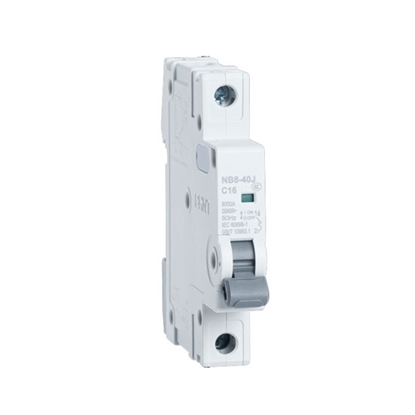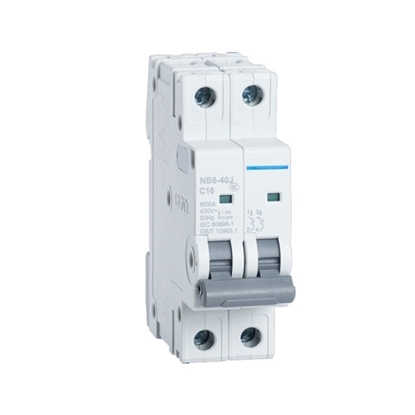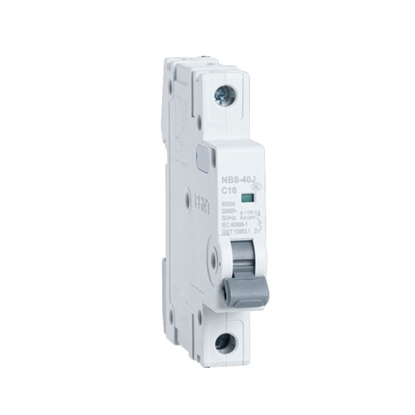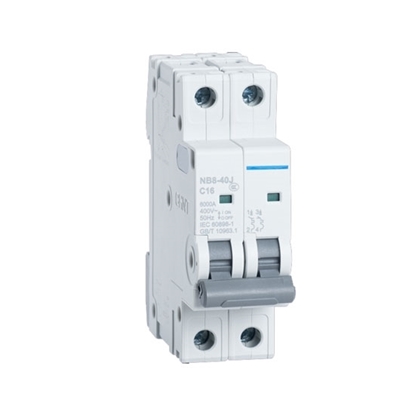- Home
-
Motors
-
Motor Controls
- Power Supplies
-
Passive Components
- Back
- Contactors
- Relays
- Capacitors
- Connectors
- Circuit Breakers
- Push Button
- Filters
- Transfer Switches
- Current Transformer
- DIP Switch
- Potential Transformer
- Electronic Ballast
- Foot Switch
- Forward Reverse Switch
- Float Valves
- Fuse
- Hook-Up Wire
- Isolator Switch
- Indicator Light
- Knife Switch
- Junction Box
- Joystick Switch
- Magnetic Starter
- Locking Plugs
- LED Machine Light
- Micro Switch
-
Pressure Switch
- Back
- Oil Pressure Switch
-
Potentiometer
- Back
- Rotary Potentiometer
- Rotary Switch
- Rocker Switch
-
Resistor
- Back
- Metal Film Resistor
- PV Combiner Box
- Over Voltage Protector
- RF Attenuators
- Low Noise Amplifiers
- Surge Protection Devices
- Terminal Block
- Toggle Switch
- Tact Switch
- Timer Switch
-
Sensors
- Back
- Load Cell
- Current Sensor
- Pressure Sensor
- Torque Sensor
- Voltage Sensor
- Limit Switch
- Angle Sensor
- Level Sensor
- Proximity Sensor
- Light Curtain
- Noise Sensor
- Gas Sensor
- Encoder
- Temperature Sensor
- Ion Selective Electrode
- Reference Electrode
- Displacement Sensor
- Accelerometer Sensor
- Flow Switch
- Strain Gauge
- Float Switch
- Gyroscope Sensor
- Inclinometer Sensor
- Laser Sensor
- Magnetic Cylinder Sensor
- pH Electrode
- PM Sensor
- Photoelectric Sensor
- Radiation Sensor
- Signal Isolator
- Safety Switch
- Speed Sensor
- Temperature and Humidity Sensor
- Ultrasonic Sensor
- Vibration Transmitters
-
Test & Measurement
- Back
- Gas Detectors
- Thickness Gauge
- Micrometers
- Protractor
- Oscilloscopes
- Turbidity Meter
- Anemometer
- Air Quality Monitor
-
Pressure Gauge
- Back
- Tire Pressure Gauge
- Colorimeter
- Clamp Meter
- Crane Scale
- Conductivity Meter
- Multimeter
- Current Transformer Tester
- Digital Inclinometer
- Distance Meter
- Dynamometer
- Force Gauge
- Digital Tachometer
- Digital Indicator
- Electronic Analytical Balance
- Handheld Ultrasonic Homogenizer
- Oil Tank Gauge Tape
- Pipe Blockage Detector
- Dielectric Oil Tester
- Volt Amp Meter
- Electronic Load
- Digital Manometer
- Rebar Scanner
- Digital Counter
- Digital Readout
- Digital Panel Meter
- Dew Point Meter
- Digital Torque Adapters
- Density Meter
- Earth Resistance Tester
- Energy Meter
- Flow Meters
- Function Generator
- Feeler Gauges
- Gloss Meter
- Gauss Meter
- Hipot Tester
- Hardness Tester
- Height Gauges
- Infrared Thermometers
- Insulation Tester
- LCR Meter
- Laser Levels
- Linear Scale
- Lux Meter
- Land Meter
- Moisture Meter
- Metal Detector
- Measuring Wheel
- Measuring Tapes
- Nuclear Radiation Detector
- Network Cable Tester
- Optical Time Domain Reflectometer
- pH Meter
- Power Meter
- Power Meter Plug
- Particle Size Analyzer
- Paperless Recorder
- Relay Tester
- Rebound Hammer
- Refractometer
- Particle Counter
- Spectrophotometers
- Sound Level Meter
- Smoke Detector
- Solar Power Meter
- Surface Roughness Tester
- Signal Generator
- Stud Finder
- Temperature Controller
- Temperature Data Logger
- Tension Meters
- USB Tester
- Vernier Caliper
- Viscometer
- Vibration Meter
- Water Quality Tester
- Water Leakage Detectors
-
Transmission & Actuator
- Back
- Gearbox
- Brakes and Clutches
- Solenoid Valves
- Shaft Coupling
- Ball Valves
- Gate Valves
- Check Valves
- Pressure Regulator
- Butterfly Valves
- Valve Actuators
- Needle Valves
- Pressure Relief Valves
- Strainers
- Control Valves
- Bearings
- Hydraulic Cylinders
- Filling Valve
- Air Filters
- Angle Seat Valves
- Globe Valves
- Diaphragm Valves
- Plug Valves
- Steam Traps
- Pinch Valves
- Hydraulic Accumulators
- Universal Couplings
- Plunger Valves
- Pulse Valves
- Torque Limiters
- Door Opener
- Drag Chain
- Air Hose Fittings
- FRL Unit
- Hydraulic Actuator
- Hand Valves
- Linear Actuators
- Linear Slide
- Linear Rail
- Pneumatic Cylinders
- Pneumatic Foot Pedal
- Slip Ring
- Vacuum Generator
- Shuttle Valves
- Quick Exhaust Valves
-
Pumps
- Back
- Centrifugal Pump
- Diaphragm Pump
- Hydraulic Pump
- Booster Pump
- Dosing Pump
- Piston Pump
- Sewage Pump
- Mud Pump
- Pool Pump
- Magnetic Drive Pump
- Fire Pump
- Bilge Pump
- Screw Pump
- Wing Pump
- Sliding Vane Pump
- Self Priming Pump
- Gear Pump
- Aerator Pump
- Lobe Pump
- Lubrication Pump
- Peristaltic Pump
- Vacuum Pump
- Well Pump
-
Tools
- Back
- Generator
- Blower
- Hoist
- Jack
- Rebar Tool
- Circular Saws
- Plate Clamp
- Glass Lined Reactor
- Desoldering Tool
- Centrifuge Machine
- Soldering Tool
- Winch
- Alarm & Siren
- Hydraulic Puller
- Cable Cutter
- Wire Stripper
- Hydrothermal Synthesis Reactor
- Lifting Hook
- Rotary Evaporator
- Beam Trolley
- Snatch Block
- Beam Clamp
- Pipe Bender
- Spring Balancer
- Flange Spreader
- Crimping Tool
- Labour Protection Appliance
- Flashlight
- DC Cooling Fan
- Endoscope
- Electric Pressure Washer
- Foam Cutter
- Heat Exchanger
- Hydraulic Punch
- Heat Gun
- Impact Wrenches
- Inkjet Printer
- Magnetic Sweepers
- Magnetic Stirrer
- Pneumatic Drill
- Pipettes
- Portable LED Work Light
- Pneumatic Screw Driver
- Rubber Sheets
- Reciprocating Saw
- Screw Feeder
- Sander
-
Communication & Controller
-
Industrial Equipment
- Back
- Air Compressors
- Chamfering Machines
- Steam Autoclave Sterilizer
- CNC Router Machine
- Dryer
- Dehumidifier
- Fume Extractor
- Fan Heater
- Industrial Cameras
- Industrial Vacuum Cleaner
-
Laser Machines
- Back
- Laser Marker
- Oil Mist Eliminators
- SCARA Robot
- Static Eliminator
- Tool Setter
- Ultrasonic Cleaner
- Water Chiller
- Welding Machine
- Water Purification System
- Technical Support
- How To Buy
- Contact
- Chat
- ATO /
- Passive Components /
- Circuit Breakers
Circuit Breakers
50 amp 1 pole Miniature Circuit Breaker
50 amp 2 pole Miniature Circuit Breaker
63 amp 1 pole Miniature Circuit Breaker
63 amp 2 pole Miniature Circuit Breaker
A circuit breaker is an electrical switch designed to protect an electrical circuit from damage caused by overcurrent/overload or short circuits. Its basic function is to interrupt current flow after protective relays detect a fault. The circuit breaker is an electrical safety device, a switch that automatically interrupts the current of an overloaded electric circuit, ground faults, or short circuits. Circuit breakers "trip", shut off, and current flow after protective relays detect a fault.
ATO.com offers four types of vacuum circuit breakers, molded case circuit breakers, miniature circuit breakers and DC circuit breakers:
- The miniature circuit breakers are 35mm DIN rail mounted and module width of only 18mm per pole. They are manufactured in 1, 2, 3, and 4 pole versions of different currents from 1A to 63A.
- Various vacuum circuit breakers with 11kV, 12kV, 15kV, 25kV, 33kV, 35kV, 40kV rated voltage are provided. The rated current of the VCB vacuum circuit breaker is 630A, 1250A, 2000A, 2500A, 3150A.
- MCCB breaker has 2 pole, 3 pole, 4 pole for selection, and wide range rated currents from 20A to 400A are available.
- DC circuit breakers have 63A /80A/100A/125A rated current for selection. 1 pole, 2 poles, 3 poles and 4 poles can be selected.
What are circuit breakers?
A circuit breaker is a switching device that can close, carry and break current under normal circuit conditions and can close, carry and break current under abnormal circuit conditions within a specified time. Circuit breakers are divided into high-voltage circuit breakers and low-voltage circuit breakers according to their scope of use. The division of high and low voltage boundaries is relatively vague. Generally, those above 3kV are called high-voltage electrical appliances.
Circuit breakers can be used to distribute electric energy, start asynchronous motors infrequently, protect power lines and motors, and automatically cut off the circuit when they are severely overloaded, short-circuited, or under-voltage. Its function is equivalent to a fuse-type switch. Combination with overheating and underheating relays, etc. Moreover, there is generally no need to change parts after breaking the fault current.
Circuit breaker advantages
After it breaks for fault, it can be reset manually, instead of changing the component, unless it needs to be repaired after cutting off the large short circuit current.
It has two segments of protective functions, i.e. the long-time delay release with inverse-time characteristics and instantaneous current release, which are used as overload and short-circuit protections respectively.
Many breakers have intelligent characteristics. Besides protection, they also have functions like electric quantity measurement, fault recording and communication interface to realize centralized monitoring and management of distribution devices and systems.
- +1 800-585-1519 (Toll-free)
- sales(at)ato.com
- Global Shipping





